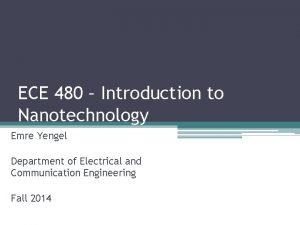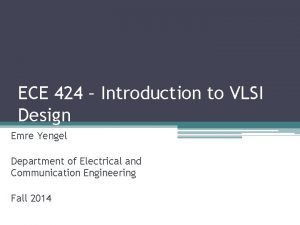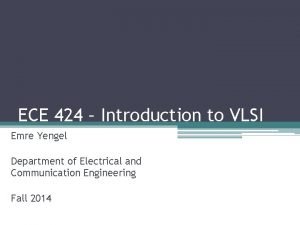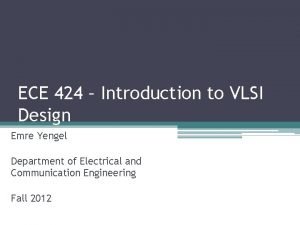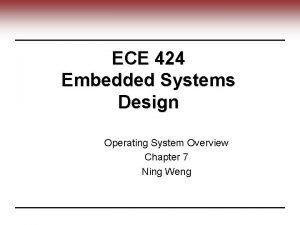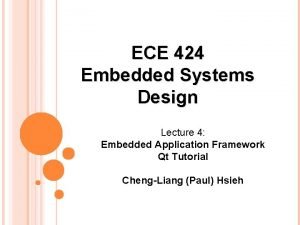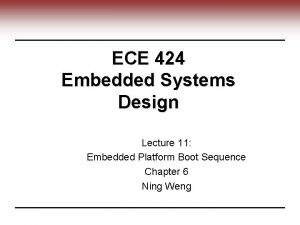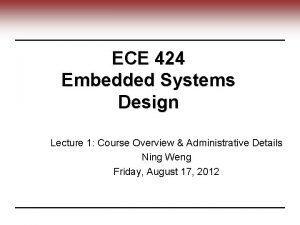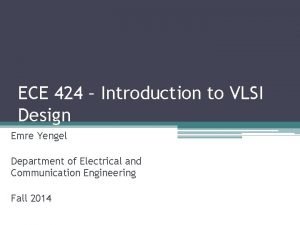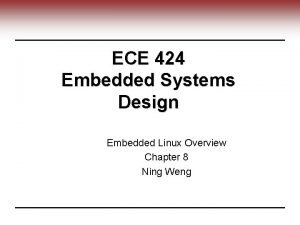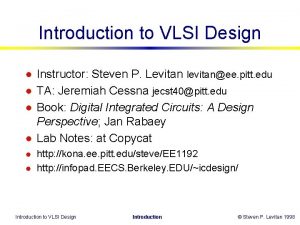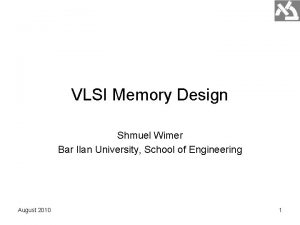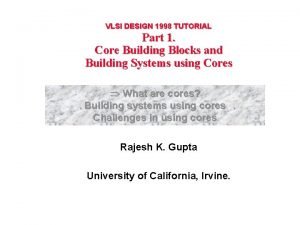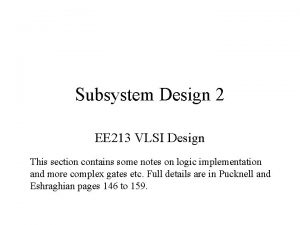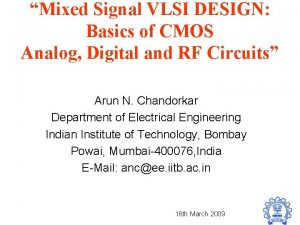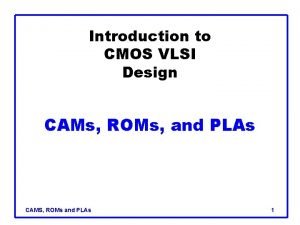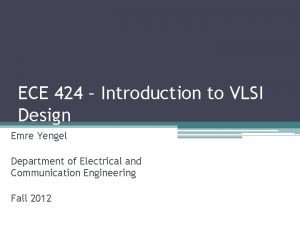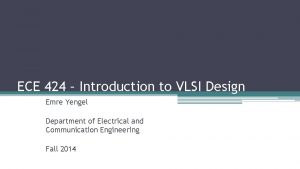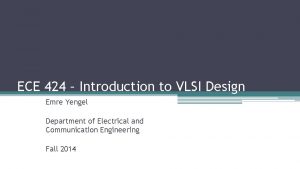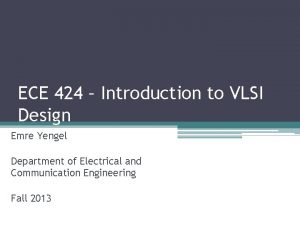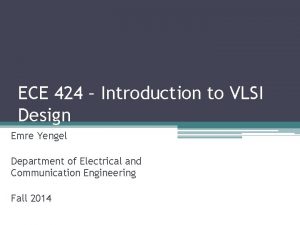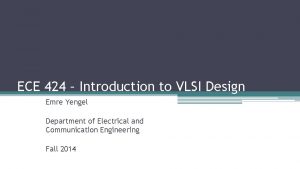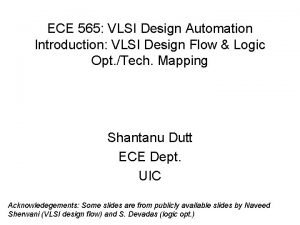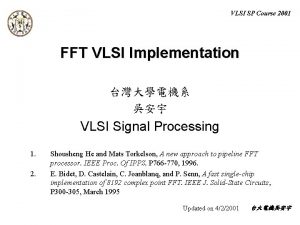ECE 424 Introduction to VLSI Design Emre Yengel

















- Slides: 17

ECE 424 – Introduction to VLSI Design Emre Yengel Department of Electrical and Communication Engineering Fall 2012

Manufacturing Technologies

Manufacturing Technologies Sand – especially Quartz - has high percentages of Silicon in the form of Silicon dioxide (Si. O 2) and is the base ingredient for semiconductor manufacturing. In this picture you can see how one big crystal is grown from the purified silicon melt. The resulting mono crystal is called Ingot.

Manufacturing Technologies An ingot has been produced from Electronic Grade Silicon. One ingot weights about 100 kilograms (=220 pounds) and has a Silicon purity of 99. 9999% The Ingot is cut into individual silicon discs called wafers.

Manufacturing Technologies The wafers are polished until they have flawless, mirror-smooth surfaces. The liquid (blue here) that’s poured onto the wafer while it spins is a photo resist finish similar as the one known from film photography. The wafer spins during this step to allow very thin and even application of this photo resist layer.

Manufacturing Technologies The photo resist finish is exposed to ultra violet (UV) light. The chemical reaction triggered by that process step is similar to what happens to film material in a film camera the moment you press the shutter button. The photo resist finish that’s exposed to UV light will become soluble.

Manufacturing Technologies The gooey photo resist is completely dissolved by a solvent. This reveals a pattern of photo resist made by the mask.

Manufacturing Technologies The photo resist is protecting material that should not be etched away. Revealed material will be etched away with chemicals. After the etching the photo resist is removed and the desired shape becomes visible.

Manufacturing Technologies Through a process called ion implantation (one form of a process called doping), the exposed areas of the silicon wafer are bombarded with various chemical impurities called Ions are implanted in the silicon wafer to alter the way silicon in these areas conducts electricity. Ions are shot onto the surface of the wafer at very high speed. An electrical field accelerates the ions to a speed of over 300, 000 km/h (~185, 000 mph)

Manufacturing Technologies This transistor is close to being finished. Three holes have been etched into the insulation layer (magenta color) above the transistor. These three holes will be filled with copper which will make up the connections to other transistors

Manufacturing Technologies The wafers are put into a copper sulphate solution as this stage. The copper ions are deposited onto the transistor thru a process called electroplating. The copper ions travel from the positive terminal (anode) to the negative terminal (cathode) which is represented by the wafer. On the wafer surface the copper ions settle as a thin layer of copper.

Manufacturing Technologies A side view of a CMOS

Manufacturing Technologies Multiple metal layers are created to interconnect (think: wires) in between the various transistors. How these connections have to be "wired" is determined by the architecture and design teams that develop the functionality of the respective processor (e. g. Intel Core i 7 Processor ). While computer chips look extremely flat, they may actually have over 20 layers to form complex circuitry. This fraction of a ready wafer is being put to a first functionality test. In this stage test patterns are fed into every single chip and the response from the chip monitored and compared to "the right answer".

Manufacturing Technologies The wafer is cut into pieces (called dies). The dies that responded with the right answer to the test pattern will be put forward for the next step (packaging).

Manufacturing Technologies This is an individual die which has been cut out in the previous step (slicing). The die shown here is a die of an Intel Core i 7 Processor The substrate, the die and the heatspreader are put together to form a completed processor. The green substrate builds the electrical and mechanical interface for the processor to interact with the rest of the PC system. The silver heatspreader is a thermal interface where a cooling solution will be put on to. This will keep the processor cool during operation.

Manufacturing Technologies Completed processor (Intel Core i 7 Processor in this case). A microprocessor is the most complex manufactured product on earth. In fact, it takes hundreds of steps –only the most important ones have been visualized in this picture story -in the world's cleanest environment (a microprocessor fab) to make microprocessors.

Manufacturing Technologies E-beam optical coater Clean room: Clean room is a work area having regulated temperature, humidity & air quality. Clean room are very important in the production of semi- conductor, hard disk drives, assemble of optical instrument and also in some other different technologies Plasma based Ion implantation system
